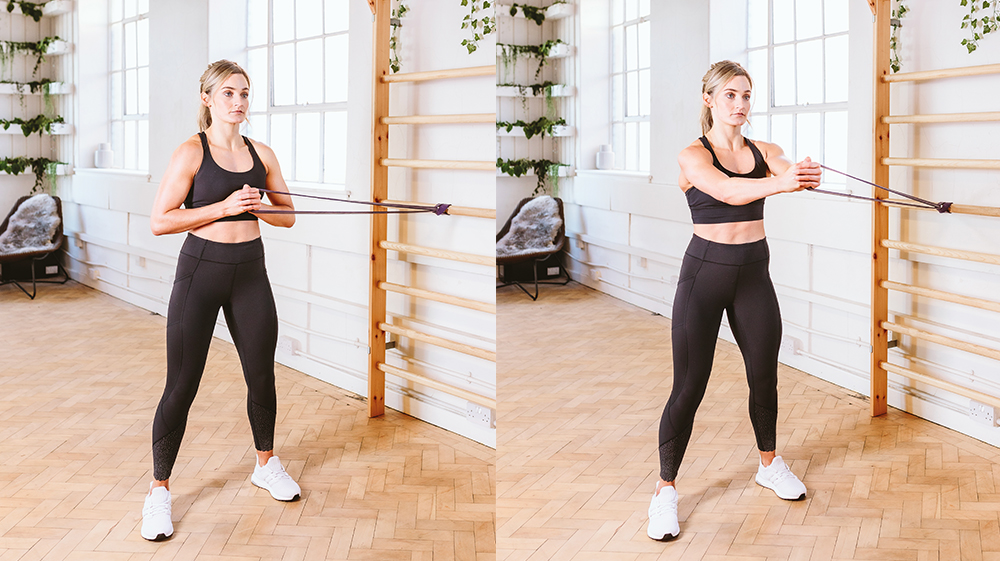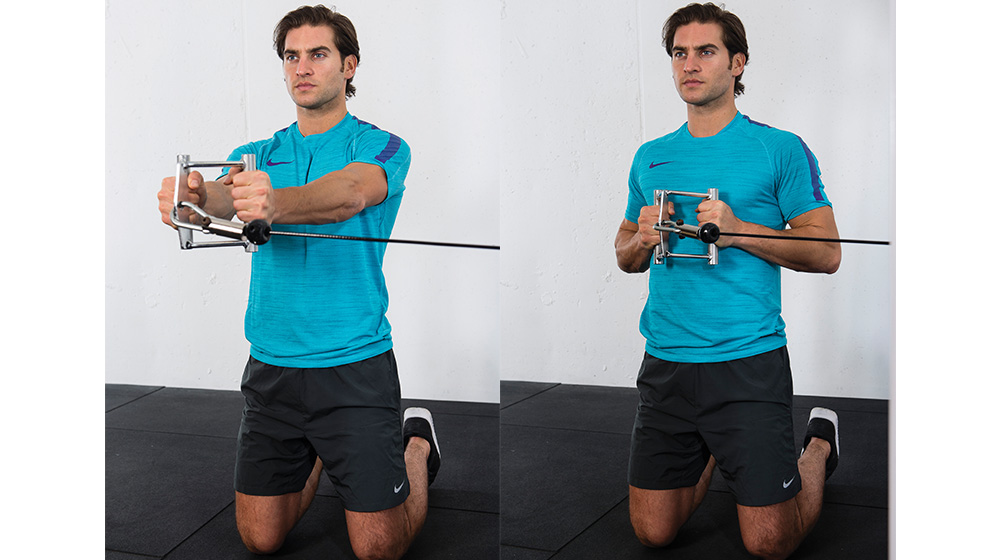How To Do The Pallof Press
Forget sit-ups and crunches – this is the route to a rock-solid core and a strong six-pack

It’s a well established fact that you don’t need to move to build a stronger core. Planks and all manner of other holds, also known as isometric exercises, can strengthen your core muscles, often far more effectively than rattling off 100 sit-ups.
The Pallof press is anti-rotation hold exercise that will work wonders in helping you develop a stable core. It’s an especially good move for those training for sports where you’re expected to spin on a sixpence at speed, because it helps build the core strength to cope with twists and turns without getting injured. Furthermore, if you like your functional workouts to come with a side of aesthetics, the Pallof press will become your new favourite, because it will sharpen up your exterior abs and obliques just as much as the interior core muscles.
How To Do The Pallof Press
How you do the Pallof press depends on what equipment you have to hand – you will need either a resistance band or, if you’re in the gym, a cable machine. It’s slightly easier to do with the latter, but if you can secure a resistance band to something at around shoulder height – something stable, a floor lamp isn’t going to cut it – then that works just as well. With a cable machine it’s best to attach a standard handle at around shoulder height.
Grasp the handle (or one end of the resistance band) in both hands and hold it against your chest. Stand or kneel side-on to the cable machine with your feet hip-width apart, then step away so the cable becomes taut. Engage your core and press the handle out with both hands so your arms are extended in front of your chest. Hold this position, resisting the pull of the cable and not letting your torso rotate towards the machine, for five to ten seconds then bring the handle back in to your chest. Do all your reps facing in one direction, then turn and stand with your other side to the machine. Alternatively, you can hold the press for as long as possible, rather than doing reps.
If you’re looking to increase the challenge of the Pallof press, move your feet closer together. Having a narrower base forces your core work even harder to keep your torso steady.
See related
- The Best Resistance Bands For Home And The Gym
- Try These Isometric Exercises And Get Stronger Without Moving
- How To Get A Six-Pack
Pallof Press Variations
Half-kneeling Pallof press
Once you’ve become comfortable with the Pallof press it’s time to move onto your knees to make the exercise a little trickier. The half-kneeling Pallof press is a good first step, because having one foot planted provides a more stable base than kneeling on both. Set up with the cable machine to the side of you and drop to one knee. Your position should resemble a lunge, but with the back knee grounded. Press the cable out in front of you and hold for five to ten seconds, resisting the rotation, then bring it back to your chest.
Kneeling Pallof press

Moving from one knee to two makes your base even more unstable, and increases the challenge to your core when resisting rotation in the exercise. If you find that you’re getting pulled off-balance during your sets, either reduce the weight a little or switch back to the half-kneeling variation to complete your final reps.
Sign up for workout ideas, training advice, reviews of the latest gear and more.
Main image: PT and sports dietitian Kerri Major, taken from her book The Dietitian Kitchen: Nutrition For A Healthy, Strong, & Happy You. Reused with permission. Photographer: Daniel McAvoy

Nick Harris-Fry is a journalist who has been covering health and fitness since 2015. Nick is an avid runner, covering 70-110km a week, which gives him ample opportunity to test a wide range of running shoes and running gear. He is also the chief tester for fitness trackers and running watches, treadmills and exercise bikes, and workout headphones.
